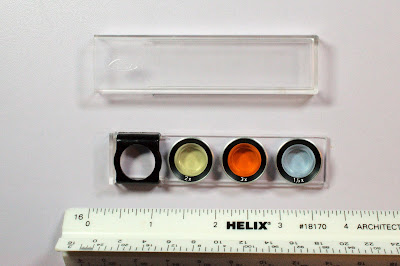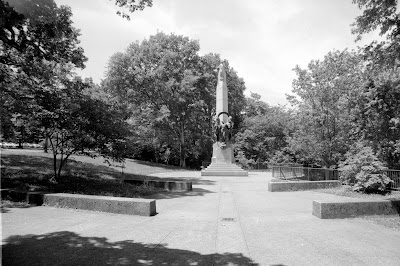Here are three Minox flash units. These were not the only ones that were made, but they are three that I have.
Minox AG-1 Flash.
The Minox AG-1 Flash let AG-1 "peanut" flash bulbs be used with a Minox B. The flash unit was a battery-capacitor flash that used a 15V battery. The flash range was 15 to 40 feet with ISO 100 film. The flash unit used a small slide to retract the reflector and eject the flashbulb. Because flash bulbs are out of production, this is not really a useful device any longer.
Minox Flashcube Holder.
Minox Flashcube Holder.
The Minox fashcube holder let flashcubes be used with a Minox B. Unlike most cameras that used flash cubes, the Minox did not turn the flash cube to a fresh bulb automatically. You had to turn the flashcube manually, which required a little care to avoid scorched fingers. Flash cubes are also a thing of the past.
Minox 8x11 Flash.
Minox 8x11 Flash.
The Minox 8x11 electronic flash came out about 1990 for the Minox EC camera and has an adapter for use with the Minox B and later cameras. The original list price for the flash unit and an adapter was $49. The flash unit is made of black plastic. It uses one 1.5V AA battery. The Minox B will sync with the 8x11 Flash at 1/100 second. The adapter covers part of the meter window of the Minox B; therefore, you will want to remove the flash in order to use the exposure meter in daylight. The flash range is 6 to 12 feet with 100 speed film or 12 to 24 feet with 400 speed film. Using the green filter reduces the flash range by about 1/3. Using the neutral gray filter reduces the flash range by about 2/3. The unit is small (3 inches by 2 inches by 3/4 inch) and weighs 2-1/2 ounces with a battery inside. The 8x11 flash is probably the most useful flash attachment.
The earliest Minox cameras did not have shutters that synchronized with flash. The model IIIs that came out in 1954 was the first Minox that was sync'ed for flash.














